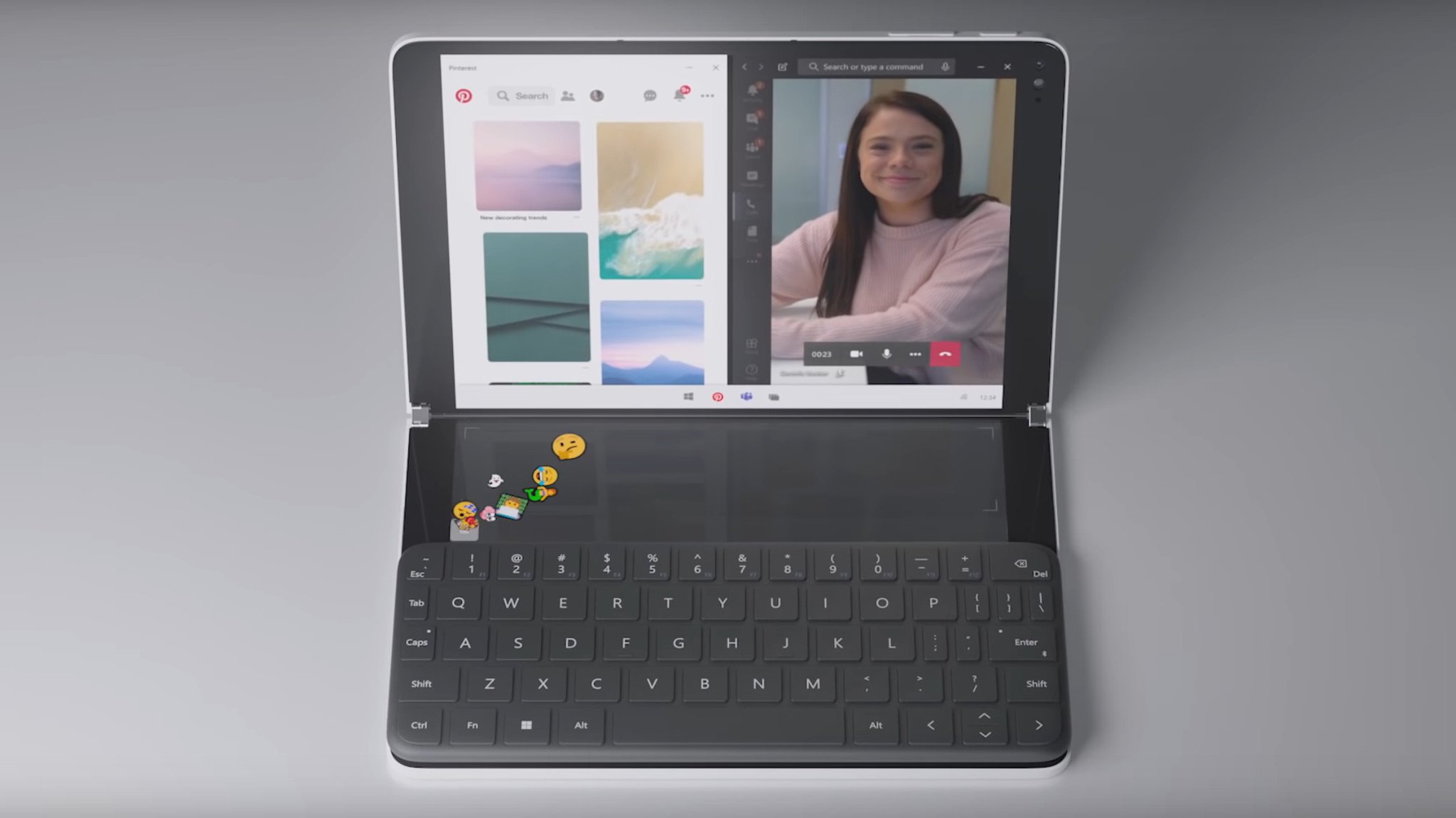A recent patent filing shows Microsoft is at least thinking about game controller attachments for the Surface Neo.
A recent patent filing (via PatentScope) has offered us a more detailed look at some of the Surface Neo's technical capabilities, alongside some tantalizing possibilities for future user scenarios.
Microsoft's Project XCloud is a massive undertaking in the gaming division, as the teams ramp up to deliver console-quality game streaming content to any device. The service is now in-testing on Android and iOS, with a Windows version soon to follow. Thus far, the service has an avalanche of high-quality content, easily beating out rivals like Google's Stadia. Although we still don't know what the monetization model looks like, the promise and potential is clearly there.
So far, we generally think about Project XCloud as being a "mobile" affair, bringing Xbox games to handsets. I've found in my own testing that larger tablets provide a far more preferable experience, owing to UI scaling issues. Some games are simply too damn hard to see, even on a large phone like my Galaxy Note 9. It is then, encouraging, that Microsoft seems to be exploring ways to bring XCloud to tablets more ergonomically.
Surface Neo gamepad attachment?
The Surface Neo wowed us when Microsoft showed it off last year. A dual-screen folding tablet, complete with a new OS dubbed Windows 10X, that revolves around the touch-first form factor.
Naturally, Windows 10X comes with some drawbacks. As a stripped-down version of Windows, it will most likely lack many of the APIs necessary to run full Win32 games from Steam or the new Xbox Store on PC, for example. This is one area where Project XCloud could really help devices like Neo to shine.
The patent in question details many of the features Microsoft showed off in the original Surface Neo trailer, but tantalizingly also references the fact the magnetic keyboard portion could be used as a "game controller."
In this example, the input device 102 is manifest as a keyboard device. In other implementations, the input device can be manifest as a trackpad or game controller, among others.
The patent-ese lingo is vague enough to avoid any hard specifics on what a "game controller" input device might look like. In the Surface Duo trailer, for example, we see the "input device" manifest as a touch-based virtual gamepad on the second display. I'd argue that no Xbox gamer on earth would prefer to play this way, given the choice. The lack of tactile controls is simply not what Xbox games are designed for, generally.
Given that the patent diagrams refer directly to the physical keyboard as the "input device," the patent could be referring to a magnetic physical gamepad, similar in function to the physical keyboard shown off in the Neo trailer. It's a bit of a stretch to assume that it is in active development, given that the only example we have is a single line of reference in a patent, but it would more than make sense.
XCloud opportunity for low-power Windows devices
 The GPD Win is a tiny PC that comes baked with an Xbox controller.
The GPD Win is a tiny PC that comes baked with an Xbox controller.
XCloud is going to hit scale on Android and iOS, but there are also millions of low-power PCs out there that can't run contemporary games even on their lowest graphics settings. XCloud also liberates Windows from decades of legacy APIs, allowing a streamlined OS like Windows 10X to gain some gaming chops of its own, via streaming.
The obvious question boils down to ergonomics. Playing XCloud titles on a squished screen isn't a pleasant experience and the phone clips on offer feel like a bandaid solution to a bigger problem. Even if the "game controller" references in the Surface Neo patent turn out to be nothing, it is encouraging that Microsoft is at least thinking about ways to bring more tactile controls to XCloud on its future devices — without having us carrying controllers and clips around.



